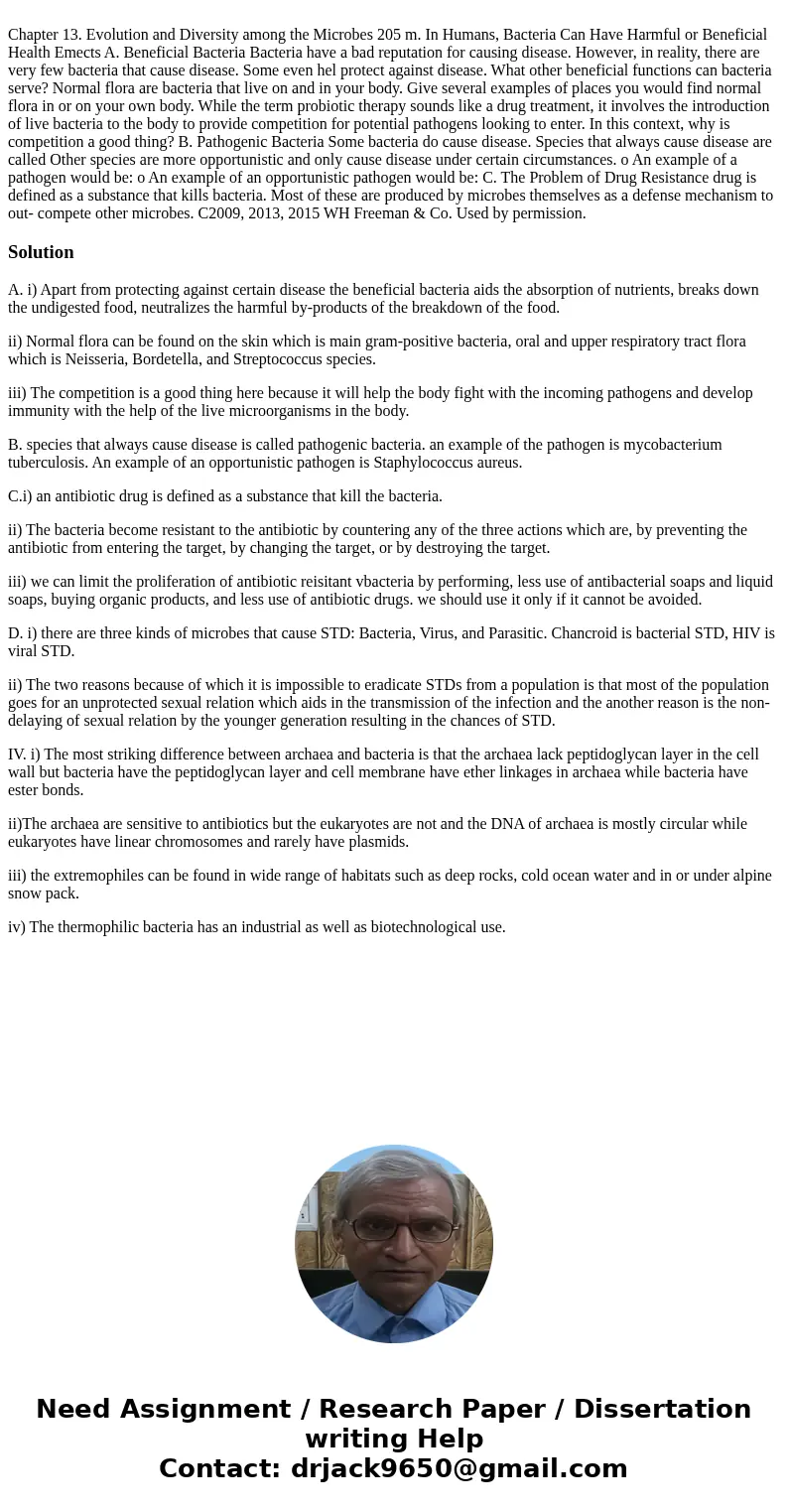Chapter 13 Evolution and Diversity among the Microbes 205 m
Solution
A. i) Apart from protecting against certain disease the beneficial bacteria aids the absorption of nutrients, breaks down the undigested food, neutralizes the harmful by-products of the breakdown of the food.
ii) Normal flora can be found on the skin which is main gram-positive bacteria, oral and upper respiratory tract flora which is Neisseria, Bordetella, and Streptococcus species.
iii) The competition is a good thing here because it will help the body fight with the incoming pathogens and develop immunity with the help of the live microorganisms in the body.
B. species that always cause disease is called pathogenic bacteria. an example of the pathogen is mycobacterium tuberculosis. An example of an opportunistic pathogen is Staphylococcus aureus.
C.i) an antibiotic drug is defined as a substance that kill the bacteria.
ii) The bacteria become resistant to the antibiotic by countering any of the three actions which are, by preventing the antibiotic from entering the target, by changing the target, or by destroying the target.
iii) we can limit the proliferation of antibiotic reisitant vbacteria by performing, less use of antibacterial soaps and liquid soaps, buying organic products, and less use of antibiotic drugs. we should use it only if it cannot be avoided.
D. i) there are three kinds of microbes that cause STD: Bacteria, Virus, and Parasitic. Chancroid is bacterial STD, HIV is viral STD.
ii) The two reasons because of which it is impossible to eradicate STDs from a population is that most of the population goes for an unprotected sexual relation which aids in the transmission of the infection and the another reason is the non-delaying of sexual relation by the younger generation resulting in the chances of STD.
IV. i) The most striking difference between archaea and bacteria is that the archaea lack peptidoglycan layer in the cell wall but bacteria have the peptidoglycan layer and cell membrane have ether linkages in archaea while bacteria have ester bonds.
ii)The archaea are sensitive to antibiotics but the eukaryotes are not and the DNA of archaea is mostly circular while eukaryotes have linear chromosomes and rarely have plasmids.
iii) the extremophiles can be found in wide range of habitats such as deep rocks, cold ocean water and in or under alpine snow pack.
iv) The thermophilic bacteria has an industrial as well as biotechnological use.

 Homework Sourse
Homework Sourse